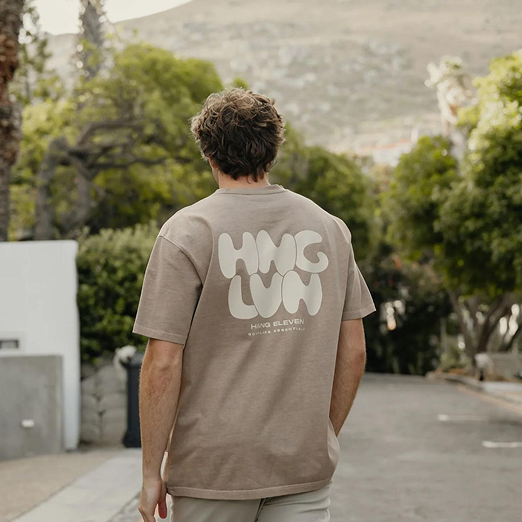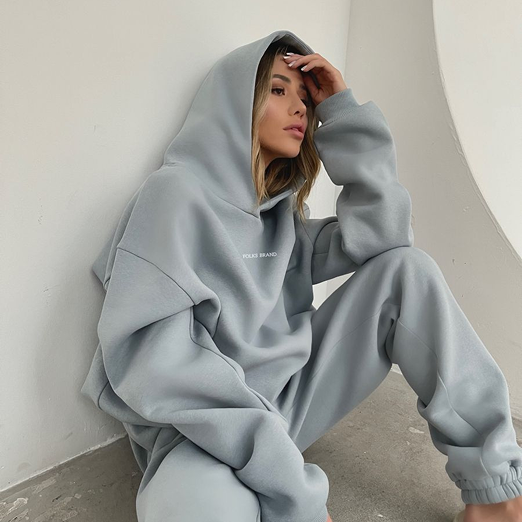Fashion has always been a form of communication — a way of saying who we are without speaking.
But no garment shouts louder, or more authentically, than the graphic T-shirt.
Once dismissed as a youthful novelty, the printed tee has reemerged as a cultural manifesto — a wearable diary, a political banner, a tribute to nostalgia, and sometimes, just a beautiful mess of ink and cotton.
From vintage rock bands to luxury streetwear, from thrift racks to runways, the graphic tee revival is not just about aesthetics — it’s about expression in its purest, loudest form.
1. The Origins of the Graphic Tee
The first graphic T-shirts appeared in the 1930s as promotional wear.
Universities and military units printed their logos on cotton jerseys, unaware that they were creating a revolution.
By the 1950s, with Marlon Brando and James Dean wearing plain white tees, the T-shirt became a symbol of rebellion — and soon, graphics followed.
Printing technology caught up, and the blank canvas was suddenly filled with possibility.
From there, the 1960s counterculture made it political — anti-war slogans, peace signs, protest art.
The T-shirt became a tool of voice.
And that voice never stopped evolving.
2. The Canvas of Culture
A graphic tee is more than fabric — it’s a medium.
Every print, whether a band logo or a poetic phrase, carries a moment in time.
It documents taste, values, memory, and movement.
Wearing a graphic tee is not just styling — it’s storytelling.
You’re telling people what you love, what you believe, where you’ve been, and sometimes, what you’ve lost.
Think about it — a vintage Nirvana tee, faded and cracked, isn’t just clothing. It’s a relic of youth, rebellion, and rhythm.
A Tour ’94 tee isn’t just about the band — it’s about the person you were when that song hit you for the first time.
That’s why the best graphic tees never really die — they just change owners.
3. Nostalgia as Aesthetic Currency
In the 2020s, nostalgia became fashion’s favorite drug — and the graphic tee was its most potent hit.
Designers began digging through archives, reviving old logos, album covers, and movie posters.
Thrift stores became gold mines.
Brands like Trendytroop, Vetements, and Palm Angels tapped into this nostalgia economy — printing memories for a new generation.
But it’s not just about copying the past.
It’s about reinterpreting it.
Each graphic is a remix — old emotions reborn with new perspective.
When someone wears a 1990s-inspired tee today, they’re not just remembering — they’re reinventing.
4. Streetwear’s Visual Language
No fashion movement understood the power of the graphic tee better than streetwear.
For decades, brands like Supreme, Stüssy, and A Bathing Ape built empires on a single idea:
logos have meaning.
The T-shirt became their flag — a declaration of belonging and identity.
Owning a drop wasn’t just about style; it was about community, participation, and relevance.
Streetwear made the T-shirt a collectible, a conversation, a piece of history.
Today, a Supreme box logo or a Trendytroop limited print carries the same weight as a designer bag.
Because in modern fashion, message is luxury.
5. The Shift to Quiet Loudness
Graphic tees used to be loud — screaming messages, bright colors, oversized logos.
But as fashion matured, so did their tone.
Now, we see quiet loudness — graphics that whisper meaning rather than shout.
Minimal typography. Tonal prints. Subtle distressing.
Designers learned restraint.
The T-shirt no longer needs to yell to be heard; it just needs to feel real.
A single word on a chest can hold more emotion than an entire collage.
A blank space can say as much as a sentence.
It’s poetry, printed on cotton.
6. The Personal Billboard
In an age of social media, self-expression is currency.
But even before we post, our clothing speaks.
The graphic tee is our personal billboard — what we choose to display to the world.
Some wear band tees to show cultural taste.
Some wear political slogans to declare alignment.
Some wear cryptic designs to stay mysterious.
Every print is a message — sometimes public, sometimes private.
And that’s why it endures.
It’s democratic.
Anyone can wear it, design it, or interpret it.
7. The Emotional Thread
Why do we keep our old T-shirts long after they’ve faded?
Because they hold memory.
A stain from a concert.
A tiny hole from a summer trip.
A graphic that once represented a dream.
Unlike fast fashion pieces, graphic tees age beautifully — their cracks and frays are a record of living.
They become like old friends: imperfect, irreplaceable.
That emotional connection is why designers are now chasing authenticity — distressing prints, fading dyes, vintage cuts — to recreate that soulful imperfection.
Because in a world obsessed with newness, imperfection feels human.
8. The Revival of Craft
Modern graphic tees are no longer cheap prints on thin cotton.
They are crafted — curated — engineered.
The best brands treat them as wearable art.
High-quality cotton (200–400 GSM), artisanal screen printing, eco-friendly inks, and hand-finished edges — these details elevate a tee from merch to masterpiece.
Luxury labels now collaborate with artists and photographers to create limited-edition runs.
Each T-shirt becomes a numbered piece of visual storytelling.
It’s fashion merging with fine art.
9. Digital Expression and AI Art
In the last few years, technology has reshaped the way we design and wear graphic tees.
AI-generated patterns, text prompts, and NFT-inspired visuals are redefining print culture.
Designers now mix hand-drawn sketches with algorithmic art to create images that feel both nostalgic and futuristic.
The result?
A new era of digital emotion — prints that feel alive, adaptive, and fluid.
And yet, even with all this technology, the essence stays the same:
A graphic tee still starts with a feeling.
10. The Luxury Paradox
When Balenciaga, Givenchy, and Gucci began printing bold logos on heavyweight cotton, many called it ironic — why pay hundreds for what used to be “cheap”?
But that’s the paradox of modern luxury: meaning over material.
A logo, a phrase, a print — it’s not about cost; it’s about connection.
And connection has become the rarest luxury of all.
The graphic tee embodies that paradox — simple, humble, but loaded with identity.
11. The Psychology of Wearing Words
Wearing words changes how we move.
It gives us quiet confidence — a layer of armor made from belief.
A graphic tee can remind you of a philosophy, a friend, or a version of yourself you refuse to lose.
It’s self-affirmation you can touch.
Fashion psychologists have noted that people wearing clothing with personal meaning tend to act with greater authenticity.
That’s why tees are so emotionally charged — they project who we are, but also who we want to be.
12. The Rise of the Collectible Tee
Collecting tees has become an art form in itself.
Archival band shirts, rare collaborations, limited drops — all command cult followings.
Vintage dealers trade them like sneakers.
Collectors curate them like fine wine.
It’s no longer just about wearing — it’s about preserving culture.
The tee has entered the gallery, the archive, the museum.
And somehow, that feels poetic — the most democratic garment becoming the most treasured.
13. Sustainability and the Print Renaissance
In an industry plagued by overproduction, the graphic tee has also become a symbol of sustainable storytelling.
Recycled cotton, water-based inks, low-impact dyes — all part of a shift toward conscious creation.
Printing fewer, better pieces that matter.
The idea is not to make a thousand T-shirts, but to make one that means something.
When design meets intention, fashion slows down — and expression becomes eternal.
14. Beyond Trend
The graphic tee isn’t a trend; it’s a timeline.
It adapts to every generation, morphing with its mood — from punk to hip-hop, from rave culture to digital minimalism.
But it never disappears.
Because it’s rooted in something timeless: the human need to express.
When words fail, prints speak.
15. The Future of the Graphic Tee
Tomorrow’s graphic tees will be more personalized, more emotional, more sustainable.
Imagine tees that change color based on mood, or prints that reveal hidden messages in sunlight.
Technology will expand what expression means — but the soul will remain analog.
Because no matter how advanced we become, we’ll still crave that familiar softness of cotton, that feeling of pulling on something that speaks for us.
16. Final Reflection: The Wearable Voice
In the end, a graphic tee is not about fashion — it’s about connection.
It connects art to body.
It connects people to memory.
It connects generations through ink and fiber.
We don’t wear graphic tees to look cool — we wear them to feel understood.
They are our loudest whispers, our silent manifestos, our wearable voices.
And that’s why, long after the trends fade, the printed T-shirt will remain the most honest garment in the world.







